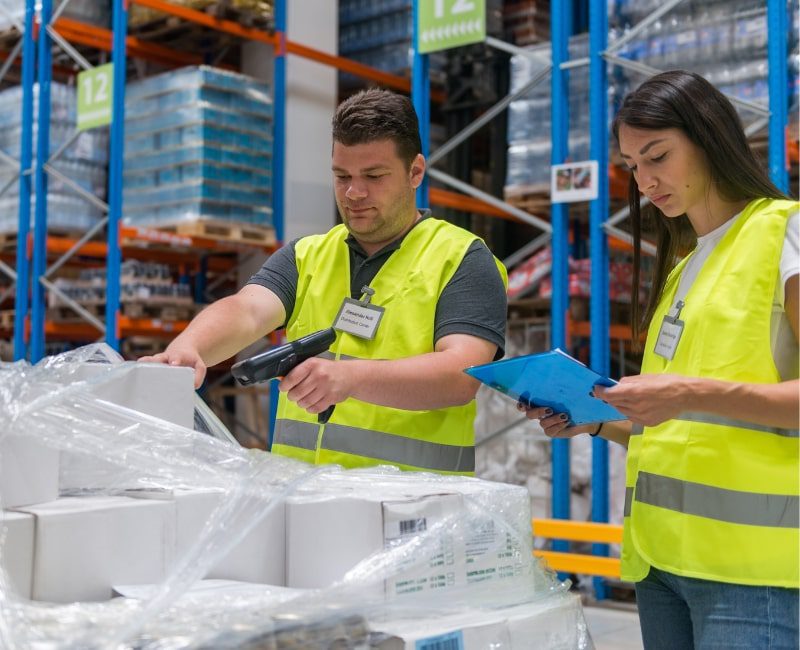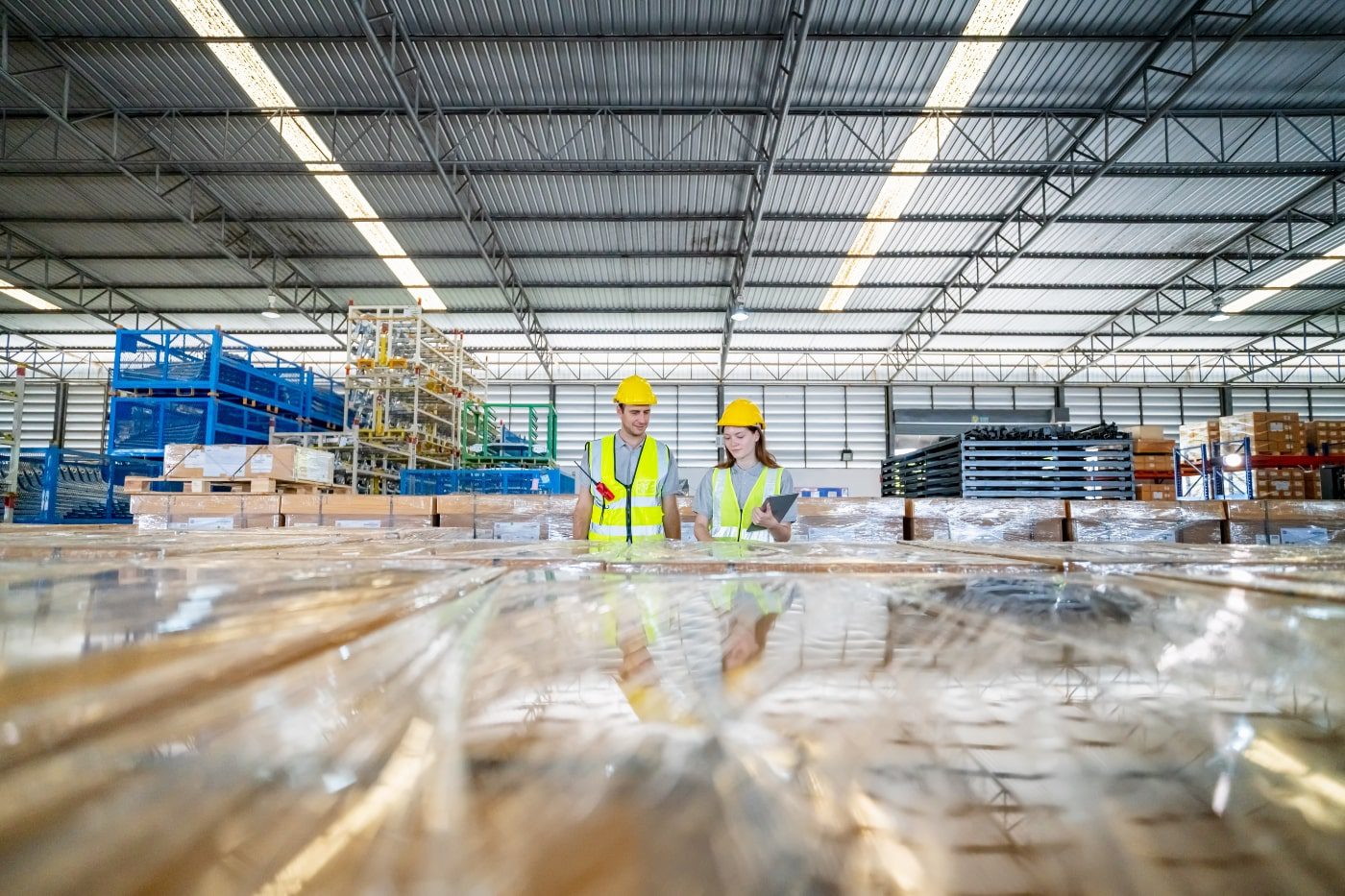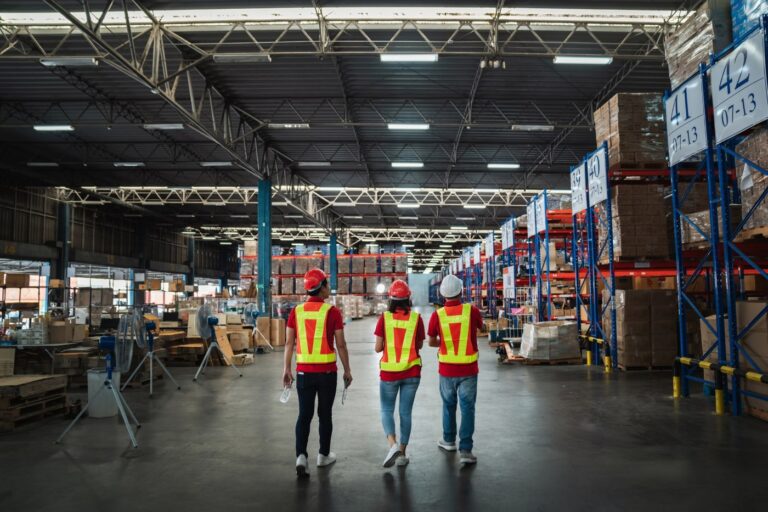Resale, refurbishment, and recycling are at the heart of a successful reverse logistics strategy. These processes not only offer significant environmental benefits by reducing waste and conserving resources but also present substantial financial opportunities for businesses.
To understand the full potential of each of these strategies, this article explores what they entail and how they can be effectively implemented within your reverse logistics operations.
Understanding Resale, Refurbishment, & Recycling
Factors like rising consumer expectations for easy returns, a growing awareness of sustainability, and stricter environmental regulations are driving businesses to rethink their approach to product lifecycles.

By understanding the ins and outs of reselling, refurbishing, and recycling, businesses can develop a comprehensive reverse logistics strategy that maximizes value and enhances overall brand reputation. Each approach presents unique opportunities and considerations, requiring a strategic and tailored approach.
Resale
The resale market presents a significant opportunity to recover value from returned or excess inventory. Here are some key areas to consider when implementing this strategy.
Identifying Products with Resale Potential: Not all returned products are created equal. Some may be in like-new condition, while others may have minor defects. Thorough inspection and grading processes are essential to determine which products are suitable for resale and which might be better suited for refurbishment or recycling.
Determining the Right Sales Channels: Once resale-worthy products have been identified, it’s crucial to choose the right sales channels to maximize returns. Options include online marketplaces (like eBay or Amazon), outlet stores, discount retailers, or even your company’s website. Each channel has its pros and cons, and the best choice will depend on your specific products and target audience.
Pricing Strategies to Maximize Profit: Setting the right price is critical for successful resale. Consider factors like the product’s condition, original price, market demand, and competitor pricing. A dynamic pricing strategy, where prices are adjusted based on real-time market conditions, can help you optimize profits.
Refurbishment
Refurbishment involves restoring returned or used products to a like-new condition. Before implementing this process, businesses should evaluate the following factors.
The Refurbishment Process: This typically includes a thorough inspection to identify any defects, followed by repairs, cleaning, and testing. Depending on the product and its condition, refurbishment can range from simple cosmetic fixes to more extensive repairs.
Balancing Costs and Returns: Refurbishment can be costly, so it’s important to weigh the potential returns against the expenses involved. Careful analysis of labor, parts, and overhead costs is necessary to determine the economic viability of refurbishing specific products.
Ensuring Quality and Customer Satisfaction: Refurbished products should meet the same quality standards as new products. Implementing rigorous quality control measures throughout the refurbishment process is crucial to ensure customer satisfaction and protect your brand reputation.
Recycling
When products are no longer suitable for resale or refurbishment, recycling offers a sustainable way to recover value from materials and reduce waste. Let’s talk about what this process entails.
Material Recovery and Resource Extraction: Recycling involves breaking down products into their constituent materials, such as plastics, metals, and glass, which can then be reused to manufacture new products.
Partnering with Responsible Recycling Facilities: Choosing the right recycling partners is essential. Look for facilities that adhere to strict environmental standards and have a proven track record of responsible recycling practices.
Navigating Recycling Regulations: Recycling is a heavily regulated industry, with varying rules and regulations depending on the materials involved. It’s important to stay up-to-date with these regulations to ensure compliance and avoid costly penalties.
How Resale, Refurbishment, & Recycling Benefits Your Business
Resale, refurbishment, and recycling are a strategic imperative for companies looking to thrive in a competitive market. Let’s talk about the benefits that your business can experience, from enhanced brand reputation to increased profitability.

By strategically reselling returned or excess inventory, you can…
- Recapture Revenue: Generate additional income from products that might otherwise be written off as losses.
- Attract Budget-Conscious Consumers: Offer high-quality products at lower prices, appealing to a wider range of customers.
- Reduce Inventory Holding Costs: Clear out excess stock, freeing up valuable warehouse space and reducing carrying costs.
- Minimize Waste: Extend the lifespan of products, keeping them out of landfills.
Refurbishing returned products can be a powerful way to…
- Increase Profit Margins: Refurbished products often command higher prices than simply reselling as-is.
- Enhance Brand Perception: Demonstrate your commitment to quality and sustainability by offering refurbished products.
- Capture New Market Segments: Appeal to eco-conscious consumers who value refurbished products as a more sustainable option.
- Extend Product Lifecycles: Get more value out of your products and reduce the need for new manufacturing.
By embracing recycling as part of your reverse logistics strategy, you can…
- Recover Valuable Materials: Extract valuable components and raw materials from products at the end of their life.
- Comply with Regulations: Meet or exceed environmental standards and avoid potential penalties.
- Boost Brand Reputation: Showcase your commitment to sustainability and corporate social responsibility.
- Reduce Environmental Impact: Conserve resources, reduce waste, and minimize your carbon footprint.
How 3PLs Optimize Resale, Refurbishment, & Recycling
While the benefits of resale, refurbishment, and recycling are clear, executing a successful reverse logistics program requires a unique blend of expertise, infrastructure, and operational excellence. This is where partnering with a 3PL can be a game-changer. Let’s explore the key advantages a 3PL brings to the table.

Expertise and Infrastructure
3PLs offer the physical resources and trained personnel necessary to manage the complexities of reverse logistics.
Warehousing and Sorting Capabilities: 3PLs have dedicated facilities equipped to handle large volumes of returned products. They can efficiently receive, inspect, sort, and store items, ensuring a smooth and organized process.
Specialized Equipment and Technology: Many 3PLs invest in advanced technology, such as barcode scanners, inventory management systems, and data analytics tools, to streamline operations and provide real-time visibility into your reverse logistics flow.
Trained Staff for Inspection and Repair: 3PLs employ skilled technicians who are experienced in inspecting, repairing, and refurbishing a wide range of products, ensuring quality and minimizing waste.
Efficiency and Cost Savings
Partnering with a 3PL allows you to leverage their operational expertise and economies of scale.
Streamlined Processes for Maximum Efficiency: 3PLs have established processes and workflows specifically designed for reverse logistics. This results in faster turnaround times, reduced errors, and improved overall efficiency.
Leveraging Economies of Scale: By consolidating reverse logistics operations for multiple clients, 3PLs can achieve economies of scale, translating into lower costs per unit for your business.
Reducing Waste and Disposal Costs: 3PLs can help you identify opportunities for resale, refurbishment, or recycling, minimizing the amount of waste sent to landfills and reducing disposal costs.
Risk Management and Compliance
3PLs offer peace of mind by ensuring regulatory compliance and protecting your brand.
Navigating Complex Environmental Regulations: Environmental regulations surrounding product returns and disposal can be intricate. 3PLs stay up-to-date on these regulations, ensuring your business remains compliant and avoiding costly penalties.
Protecting Brand Reputation: A well-managed reverse logistics program can enhance your brand’s image by demonstrating your commitment to sustainability and customer satisfaction. 3PLs help ensure a positive customer experience throughout the returns process, safeguarding your brand reputation.
Mitigating Liability: Product recalls and liability issues can be costly and damaging. 3PLs have expertise in handling recalls efficiently and minimizing your risk exposure.
Developing Your Resale, Refurbishment, & Recycling Strategy
A successful reverse logistics strategy is not one-size-fits-all. It requires a tailored approach that aligns with your specific business goals, product types, and customer expectations. Let’s outline the key steps in developing a strategy that maximizes value and minimizes waste.

Assessing Your Needs
Before diving into solutions, take a step back and assess your current reverse logistics operations. Ask yourself these questions:
- What types of products are being returned, and in what volumes?
- What are the primary reasons for returns (defective, unwanted, etc.)?
- What is your current process for handling returned products?
- What are your pain points and areas for improvement?
- What are your financial goals for your reverse logistics program?
- How important is sustainability to your brand and customers?
Key Considerations
When developing a comprehensive reverse logistics strategy, these three factors should be at the forefront of the decision-making process:
Cost: Analyze the costs associated with resale, refurbishment, and recycling. This can include transportation, labor, storage, and disposal. Consider the long-term financial impact of each option.
Environmental Impact: Evaluate the environmental consequences of your reverse logistics choices. How much waste are you generating? What is your carbon footprint? Choosing eco-friendly options like refurbishment and recycling can enhance your brand’s sustainability credentials.
Brand Reputation: Consider how your reverse logistics practices reflect on your brand image. Are you prioritizing customer satisfaction? Are you demonstrating a commitment to sustainability? A positive brand reputation can lead to increased customer loyalty and sales.
Choosing the Right Partner
Partnering with the right 3PL can be instrumental in implementing a successful reverse logistics strategy. Look for a provider who offers:
Expertise: Choose a 3PL with a proven track record in reverse logistics. Look for industry certifications, case studies, and testimonials that demonstrate their expertise.
Tailored Solutions: A good 3PL will take the time to understand your unique needs and develop customized solutions that align with your goals.
Transparency and Communication: Clear communication and real-time visibility into your reverse logistics operations are essential. Choose a 3PL that provides robust reporting and analytics tools.
Technology and Innovation: Look for a 3PL that invests in cutting-edge technology to streamline processes, optimize efficiency, and provide data-driven insights.
Commitment to Sustainability: If environmental responsibility is a priority, choose a 3PL that shares your values and prioritizes sustainable practices.
Discover the Hidden Value in Resale, Refurbishment, & Recycling
Through resale, refurbishment, and recycling your business can convert returned products into a source of profit, sustainability, and brand enhancement.
However, navigating the complexities of reverse logistics requires specialized expertise and infrastructure. At Hanzo Logistics, we have the experience, technology, and commitment to sustainability to help you optimize your reverse logistics operations.
Our tailored solutions are designed to maximize the value of your returned products, streamline your processes, and ensure compliance with environmental regulations. Are you ready to transform your reverse logistics into a competitive advantage?



